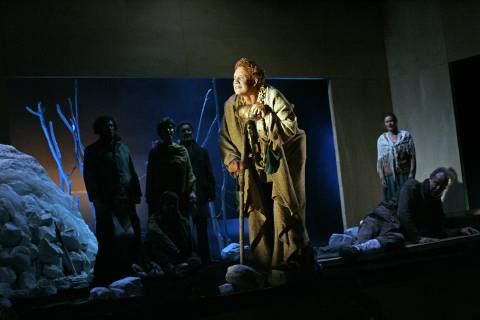|

Vividly Dramatic
Monteverdi's 'Orfeo', reviewed by ROBERT HUGILL
Monteverdi and Striggio's Orfeo uses the contemporary convention of pastoral poetry as the background for the very real drama of Orfeo's story. The opera's first audience in the Mantuan Ducal Palace would have been comfortable with these conventions and some commentators would argue that the audience would have been able to read the neo-platonic archetypes behind the conventions.
It is trickier for modern producers; they must ask themselves, who are the people? The most successful productions of Orfeo that I have seen have been those that project the opera onto the background of the Mantuan court, setting the opera in the context of a renaissance court.
Another way is to project the opera as a singular, choreographic vision: Tricia Brown's production at the Barbican some years ago was particularly memorable. A third way is to attach a parallel narrative to the celebrations in Act 1. This was done notably by David Freeman in his English National Opera production, set on the steppes of central Bulgaria. There was something of the Freeman approach in James Conway's production of Orfeo for English Touring Opera (seen Saturday 21 September 2006 in Cambridge UK).
Set in Michael Vale's wooden structure common to all the operas in this autumn tour, the opera was dressed with an installation by the artist Kathy Prendegast, a pile of stones, some very atmospheric bare tree branches and a projection of a full moon. Throughout the evening, Matthew Haskins' lighting plot was atmospheric and evocative, ably filling in for the bareness of the setting.

Hal Cazalet in the title role of English Touring Opera's production of Monteverdi's 'Orfeo'. Photo © 2006 Keith Pattison
|
In Conway's production, these people are a group of vagrants, ex-hippies, who come together to act out the story of Orfeo. Conway's intention was to explore the idea of Orfeo as shaman, but apart from his investing Orfeo with some strange green gloves, this idea seems to get a little lost in his desire to create relationships between the nine cast members.
Continue >>
Copyright © 26 October 2006
Robert Hugill, London UK

| 
